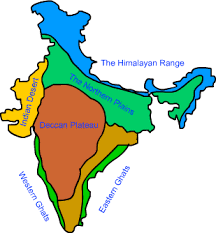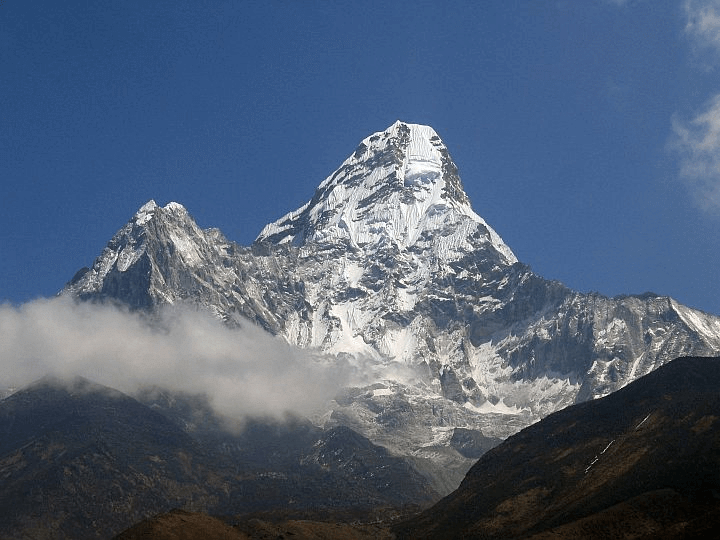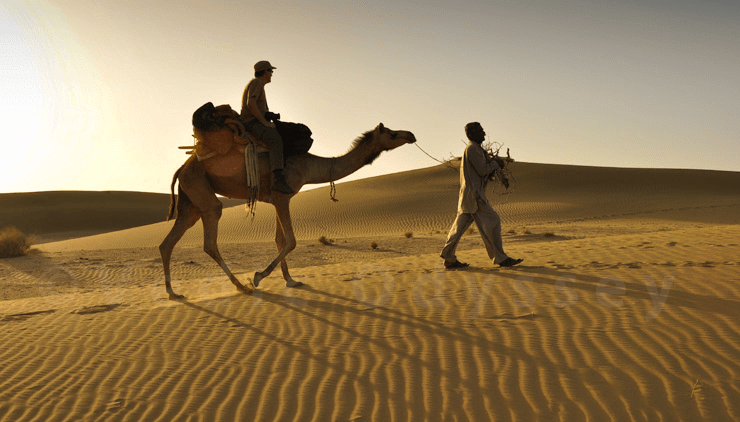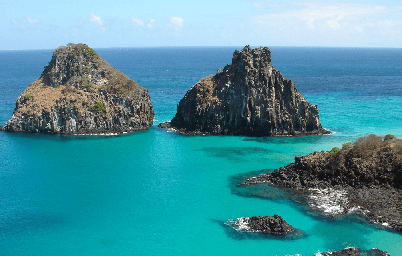Class 9 Exam > Class 9 Notes > Chapter Notes For Class 9 > Key Concepts - Physical Features of India
Key Concepts - Physical Features of India | Chapter Notes For Class 9 PDF Download
Location
- India has all major physical features of the Earth, i.e. mountains, plains, deserts, plateaus and islands.
- In India the soil color varies from place to place as it is formed from different types of rocks.
- The physical features of India can be grouped under the following physiographic divisions :
(i) The Himalayan Mountains.
(ii) The Northern Plains
(iii) The Peninsular Plateau
(iv) The Indian Desert
(v) The Coastal Plains
(vi) The Islands
 Fig. Physiographic divisions of India
Fig. Physiographic divisions of India
The Himalayan Mountains
- The Himalayas are young-fold mountains which are the loftiest and one of the most rugged mountain barriers of the world.
- The Himalayas are 2400 km long, 400 km to 150 km wide from Kashmir to Arunachal Pradesh respectively.
- The Himalayas have three parallel ranges in the longitudinal extent namely :
— Great or Inner Himalayas also called Himadri.
— Middle Himalayas or Himachal.
— Outer Himalayas or Shivalik. - The Himalayas can be divided into four sections :
— Punjab Himalayas — between Indus and Satluj.
— Kumaon Himalayas — between Satluj and Kali.
— Nepal Himalayas — between Kali and the Tista.
— Assam Himalayas (Eastern Himalayas) — Between Tista and the Dibang (Tsangpo).
 Fig. Himalayas
Fig. Himalayas
Question for Key Concepts - Physical Features of IndiaTry yourself: Which physiographic division of India is known for its young-fold mountains?View Solution
The Northern Plains
- The Northern Plains spread over an area of 7 lakh sq. km, 240 km long and 240 km to 320 km broad.
- The rivers that flow to the plains from the mountains are involved in depositional work.
- Difference in relief causes the Northern Plain to have four regions.
— Bhabar — laying at the foot of Shivalik, a narrow 8 to 16 km wide belt of pebbles.
— Terai — lying next to Bhabar, a wet and marshy area with wildlife and forests.
— Bangar — Older alluvium plain which rises above the level of the flood plains.
— Khadar — Younger alluvium of the flood plains.
The Peninsular Plateau
- The Peninsular Plateau is the tableland formed due to the breaking and drifting of the Gondwanaland.
- The plateau consists of two broad divisions, namely, the Central Highlands and the Deccan Plateau.
- The eastward extensions of Peninsular Plateau are locally known as Bundelkhand and Baghelkhand. The Chhota Nagpur Plateau marks the further eastward extension drained by the Damodar river.
- The Deccan Plateau, a triangular mass, lies to the south of the river Narmada.
- The western and eastern edges of the Deccan Plateau are marked by the Western Ghats and the Eastern Ghats respectively.
- The Western Ghats are higher than the Eastern Ghats.
- A distinct feature of the peninsular plateau is the black soil area known as Deccan Trap.
The Indian Desert
- The undulating sandy plain covered with sand dunes towards the western margins of the Aravalli Hills is the Indian Desert.
- Crescent shaped dunes called barchans cover large parts of the Indian Desert.
- Luni is the only large river in this region.
 Fig. Indian Desert
Fig. Indian Desert
The Coastal Plains
- The narrow coastal strips flank the Peninsular Plateau.
- On the west the coastal strips are divided into Konkan (Mumbai-Goa), Kannad Plain and the Malabar coast from northern to southern part.
- On the east the coastal strip is divided into Northern Circars and the Coromandal Coast from northern to southern part.
Question for Key Concepts - Physical Features of IndiaTry yourself: Which region in the Northern Plains is characterized by wet and marshy areas with wildlife and forests?View Solution
The Islands Fig. Islands
Fig. Islands
- The Lakshadweep Islands group in the Arabian Sea is close to Kerala.
- The Lakshadweep Islands were formerly known as Laccadive, Minicoy and Amindive.
- The Andaman and Nicobar Islands are an elongated chain of islands located in the Bay of Bengal.
- The Andamans and Nicobar Islands are an elevated portion of submarine mountains.
The document Key Concepts - Physical Features of India | Chapter Notes For Class 9 is a part of the Class 9 Course Chapter Notes For Class 9.
All you need of Class 9 at this link: Class 9
FAQs on Key Concepts - Physical Features of India - Chapter Notes For Class 9
| 1. What are the major physical features of India? |  |
Ans. India is a vast country with diverse physical features. The major physical features of India are the Himalayas, Indo-Gangetic Plains, Peninsular Plateau, Coastal Plains, and Islands.
| 2. What is the significance of the Himalayas for India? |  |
Ans. The Himalayas are the highest mountain range in the world and provide a natural barrier to India's north. They protect India from the cold winds of Central Asia and also play an important role in the country's climate and weather patterns.
| 3. How do the rivers of India contribute to the country's agriculture? |  |
Ans. India has several major rivers, such as the Ganges, Brahmaputra, and Indus, which provide water for irrigation and other agricultural activities. The fertile Indo-Gangetic Plains, which are fed by these rivers, are the breadbasket of India and produce a variety of crops.
| 4. What are the unique features of the Indian coastline? |  |
Ans. The Indian coastline is over 7500 km long and is characterized by several unique features such as estuaries, lagoons, deltas, and coral reefs. The coastline is also home to several important ports that play a crucial role in India's trade and commerce.
| 5. What are the major islands of India and what is their significance? |  |
Ans. India has two major island groups - the Andaman and Nicobar Islands in the Bay of Bengal and the Lakshadweep Islands in the Arabian Sea. These islands are known for their biodiversity and are home to several endemic species of flora and fauna. The islands also have strategic importance for India's security and defense.

|
Explore Courses for Class 9 exam
|

|
Signup for Free!
Signup to see your scores go up within 7 days! Learn & Practice with 1000+ FREE Notes, Videos & Tests.
Related Searches


















